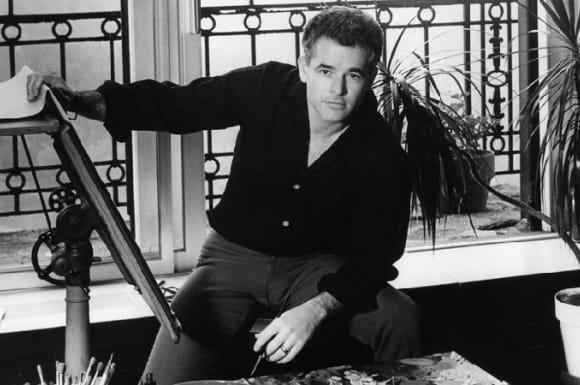DALLAS – Illustrator Robert Peak is so often cited as “The Father of the Modern Movie Poster” that when you Google the latter, you inevitably get the former.
The ad man and maker of Time magazine covers painted more than 130 film posters in the 1960s, ’70s and ’80s, and was feted time and again “for injecting vitality and vibrant colors” into those works, as The New York Times noted upon his untimely death in 1992.
His original painting of a Marlon Brando movie poster for Francis Ford Coppola’s 1979 Vietnam War epic, Apocalypse Now, has just set a new record for the artist, after selling for $212,500. The most iconic artwork of Brando as Col. Kurtz was a centerpiece of the Illustration Art Signature Auction at Heritage Auctions.
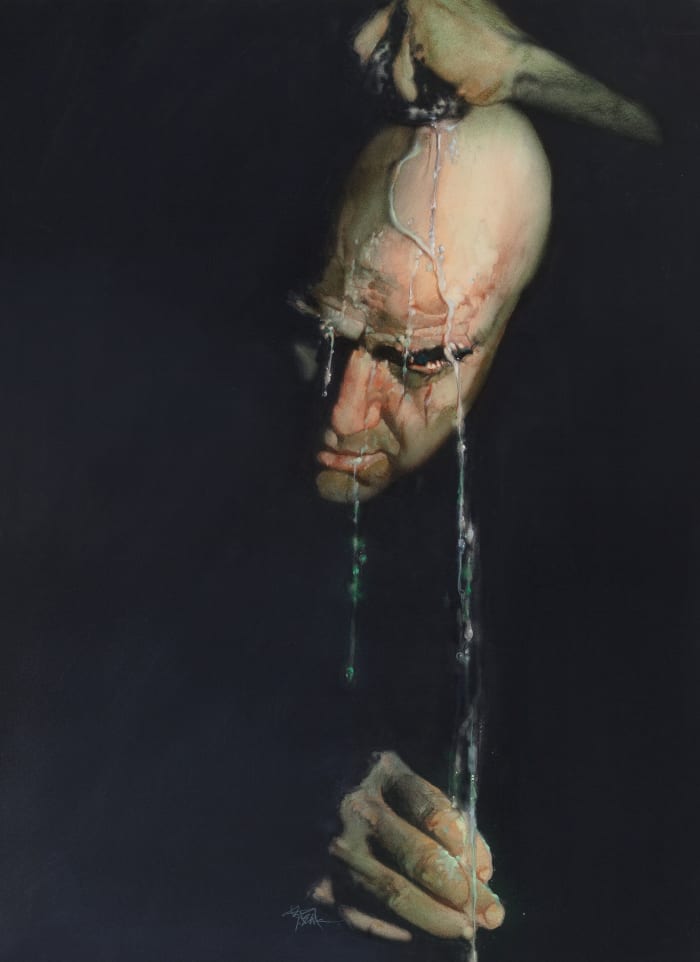
Robert Peak’s Apocalypse Now movie poster illustration featuring Marlon Brando, 1979, sold for an artist-record $212,500. The illustration was the final, published poster for the European release of the film. It was then later published for the trilogy of posters in America.
Courtesy of Heritage Auctions
Peak’s poster has everything going for it — it’s a beautifully rendered, boldly dramatic published image from one of the most popular and critically acclaimed films of the last 50 years. And the art was directly from the Peak family, having never been on the market previously.
Peak did a series of posters for Apocalypse Now, images he told Coppola he envisioned as a trilogy for the filmmaker’s adaptation of Joseph Conrad’s novella Heart of Darkness. One of Peak’s other posters for the movie shows only the mouth of the Nùng River beneath the blood-red sun and approaching helicopters — the beginning of the trilogy. Another image is the popular theatrical-release poster featuring the Navy patrol boat heading up river, toward Kurtz, whose bald, sweat-dripping head swallows center and seemingly consumes the image. Almost unnoticed, tucked away in the right-hand corner, Martin Sheen’s Captain Willard stares straight ahead.
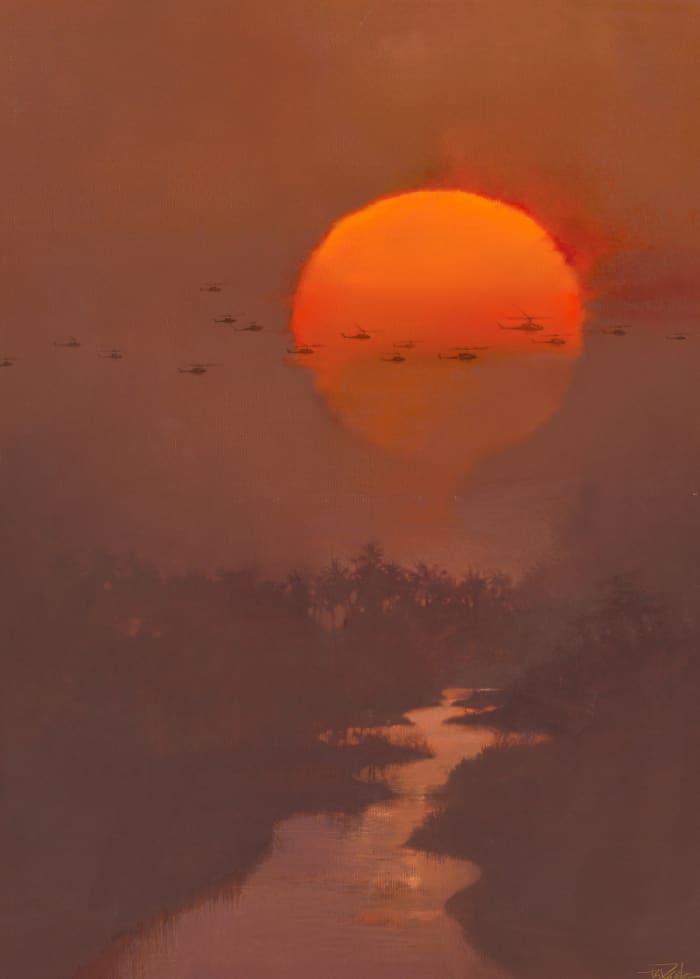
Apocalypse Now alternate movie poster design by Robert Peak, 1979; mixed media on canvas, 40″ x 30″, signed lower right. This sold at Heritage in 2019 for $30,000.
Courtesy of Heritage Auctions
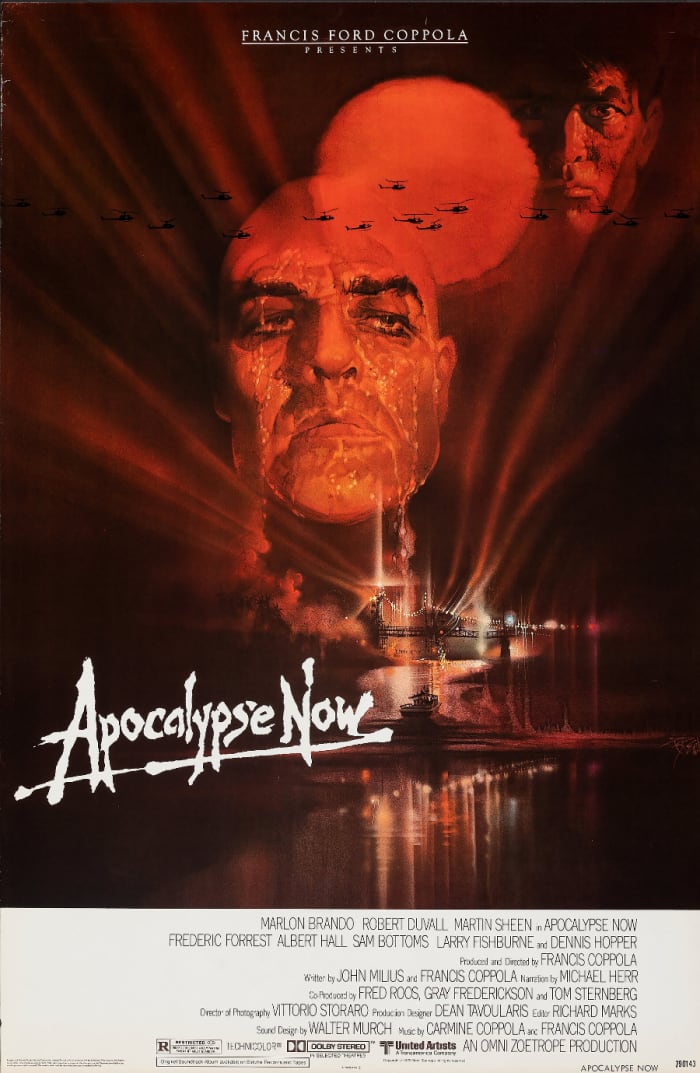
Apocalypse Now (United Artists, 1979) movie poster with Robert Peak artwork. This sold at Heritage in February for $480.
Courtesy of Heritage Auctions
The record-breaking third poster in Peak’s trilogy is the simplest yet the most striking of the bunch: Brando alone, water and sweat pouring off a shaved head that looks sculpted of wet clay. It’s a snapshot from the film’s most potent scene, as Kurtz confronts Willard about his mission and intention. This is where Willard accuses the colonel of having gone “totally insane,” and Kurtz damns the captain as little more than “an errand boy sent by grocery clerks to collect a bill.”
“This image of Brando coming out of the darkness has become iconic,” said Peak’s son, Roberto Santo, himself a renowned sculptor. “My father said, ‘I want to do it as a painting.’ He always felt watercolor for him was the true meaning of painting because you couldn’t make any mistakes. Whatever happened, you couldn’t paste something on top of it.”
Peak’s work features some of the most recognizable movie art of the last half century, including West Side Story, Camelot, My Fair Lady, Excalibur, Rollerball, Funny Girl, The Spy Who Loved Me, Superman: The Movie, Enter the Dragon and the first five Star Trek films.
Some 20 works of his reside in the permanent collection at the Smithsonian Institution’s National Portrait Gallery, among them drawings and paintings of Brando, Mother Teresa, Joni Mitchell, Richard Nixon and The Band — all done for the cover of Time. That theatrical-release Apocalypse Now poster also resides in the Smithsonian’s permanent collection.
Santo brought the quintessential Apocalypse Now work to auction to remind the world there was a man behind these landmark images, an artist collected by the Smithsonian and revered by his peers — Peak is in the Society of Illustrators Hall of Fame alongside Norman Rockwell, N.C. Wyeth and Frederic Remington — but almost forgotten by a public that continues to collect his works.
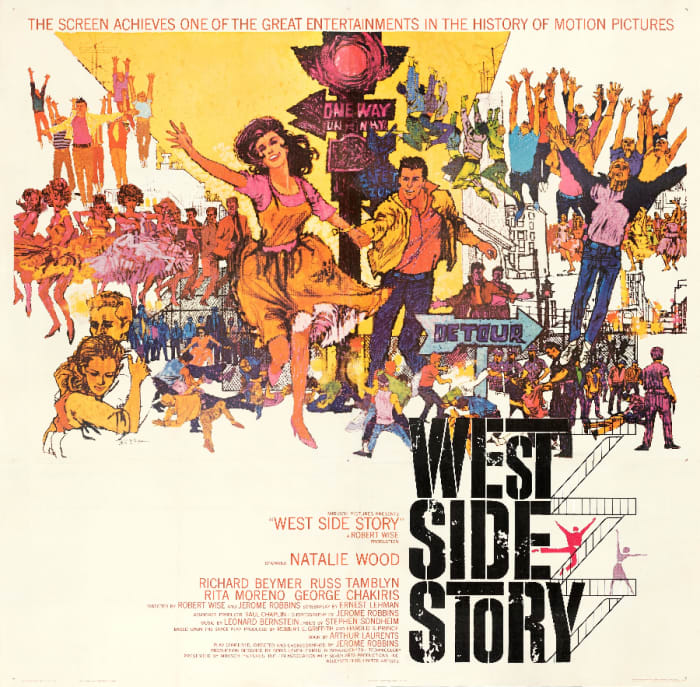
Robert Peak’s artwork for the movie poster for West Side Story (United Artists, 1961). This sold at Heritage Auctions in March for $2,640.
Courtesy of Heritage Auctions
Santo said his father was so consumed by the Apocalypse Now piece that he would often be unable to sleep at night; some mornings he would wake up and complain that Brando had crept into his dreams and rousted him from his slumber. The actor and artist knew each other well enough: Peak painted Brando for Time, and did the poster for Arthur Penn’s The Missouri Breaks starring Brando and Jack Nicholson. But it’s the Apocalypse Now painting-turned-poster that resonates loudest all these years later.
“This particular piece is the epitome of what my father was all about: coming up with an image so startling, so spectacular, it sums up an entire movie. Two and a half hours pulled into one image,” Santo said. “My father felt strongly that this was Apocalypse Now. It’s the iconic image.”
You might also like
A remarkable collection of movie posters


